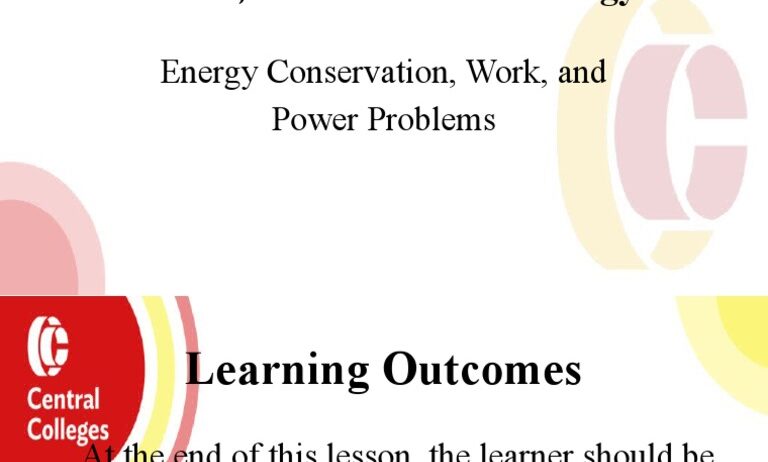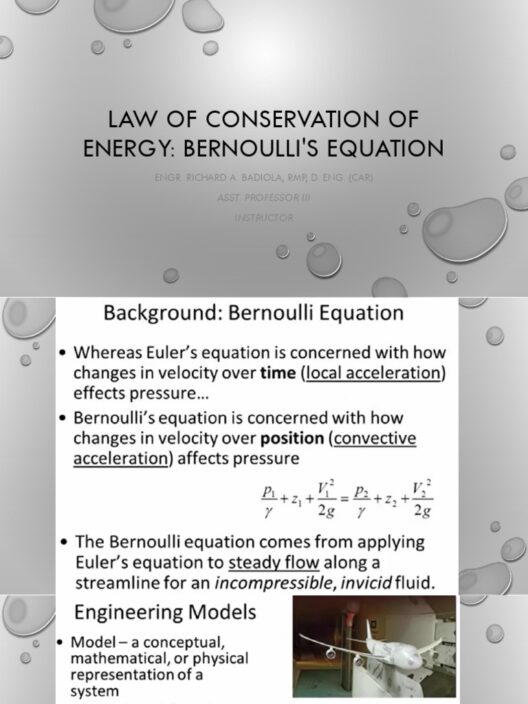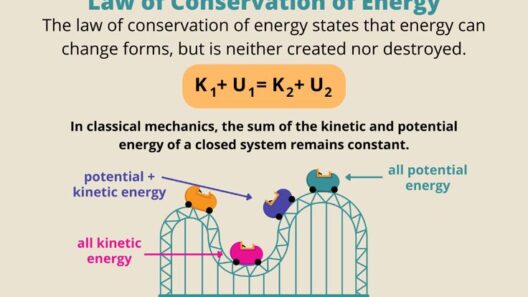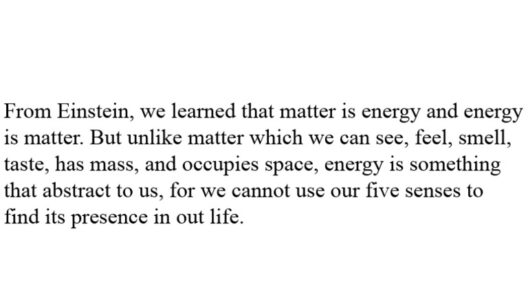In the realm of physics, the principles governing energy conservation are foundational yet nuanced. Particularly intriguing is the distinction between conservative and non-conservative forces, a topic that often engenders curiosity and debate among scholars and enthusiasts alike. To comprehend whether energy is conserved in systems influenced by non-conservative forces, one must delve into the nuances of both force types and explore their implications in various physical contexts.
Conservative forces, by definition, are forces that conserve mechanical energy. The classic example is gravitational force. When an object is moved within a gravitational field, the work done is path-independent, meaning that the total mechanical energy—kinetic plus potential—remains constant if only conservative forces are acting. This conservation holds true in an idealized, frictionless environment. Conversely, non-conservative forces, such as friction, air resistance, and tension, dissipate energy, often converting it into heat or sound, which leads to a net loss of mechanical energy within the system.
The crux of the issue arises when considering systems exposed to non-conservative forces. A common observation is that when an object is subject to these forces, such as a sliding box encountering friction on a surface, the mechanical energy of the box decreases. This phenomenon prompts a fundamental question: Is energy truly conserved in such scenarios?
The answer is both straightforward and layered. From a purely mechanical perspective, non-conservative forces do not conserve mechanical energy within the system. The work done against these forces results in a transformation of energy forms, typically into thermal energy. For instance, when an object moves through a viscous medium, it loses kinetic energy as friction converts that energy into heat. This loss is apparent in the decreasing speed or the stopping motion of the object.
However, it is crucial to expand the perspective to include energy conservation in its entirety, which transitions us from mechanical to thermal energy considerations. In an isolated system, while mechanical energy decreases due to the action of non-conservative forces, the energy is not lost to the void; it is transformed and conserved as thermal energy. This transformation is guided by the first law of thermodynamics, which states that energy cannot be created or destroyed but only converted from one form to another. Therefore, while mechanical energy may diminish, the total energy, encompassing all conversions and transformations, remains conserved.
Examining real-world applications further elucidates the implications of non-conservative forces on energy conservation. Take, for example, a car braking on a highway. The brakes apply a non-conservative force, resulting in a reduction of kinetic energy. Consequently, the car slows down, and energy appears to be lost. In actuality, the kinetic energy has been transformed into thermal energy due to the friction between the brake pads and the discs, illustrating that while mechanical energy is not conserved, the overall energy is maintained through conversion.
These analyses lead to a more profound enlightenment regarding energy conservation laws. The term “conservation” logs a vital distinction—it denotes that energy is neither obliterated nor fabricated within a closed system, but is perpetually transitioning through varying forms. Non-conservative forces exemplify energy transfer and conversion, emphasizing the ubiquitous nature of energy. Understanding this principle is imperative in fields such as engineering, environmental science, and technology, where harnessing and managing energy efficiently is paramount.
Another intriguing aspect of non-conservative forces is their role in complex systems, where multiple forms of energy interact. Consider a pendulum swinging under the influence of air resistance (a non-conservative force). As the pendulum swings, it loses mechanical energy in the form of diminished swing amplitude due to energy dissipation through air friction. Yet, the energy is not extinguished; it is merely redistributed in the environment and manifests as dissipated thermal energy. Observing such systems naturally raises additional questions about the nature of energy dispersion, efficiency, and conservation in multifaceted scenarios.
Sustainability advocates often highlight these principles when discussing energy efficiency in technology. For instance, in renewable energy systems such as wind turbines, understanding the interactions of conservative and non-conservative forces is vital for optimizing energy capture. Engineers must consider losses due to air resistance and friction to design more effective and sustainable energy solutions.
As we navigate this multifaceted topic, it becomes apparent that the interplay between conservative and non-conservative forces has profound implications on our approach to energy management and conservation techniques. Thus, acknowledging energy transformations engenders a richer understanding of various physical systems, from the macroscopic phenomena down to microscopic interactions.
In summary, while energy is not conserved in the mechanical sense when non-conservative forces act on a system, its totality remains unwavering across myriad transformations. Acknowledging this complexity fosters a deeper appreciation for energy’s omnipresence and versatility in our universe, encouraging a continual exploration of how we perceive and conceptualize energy conservation through the lens of both classical mechanics and modern science.








